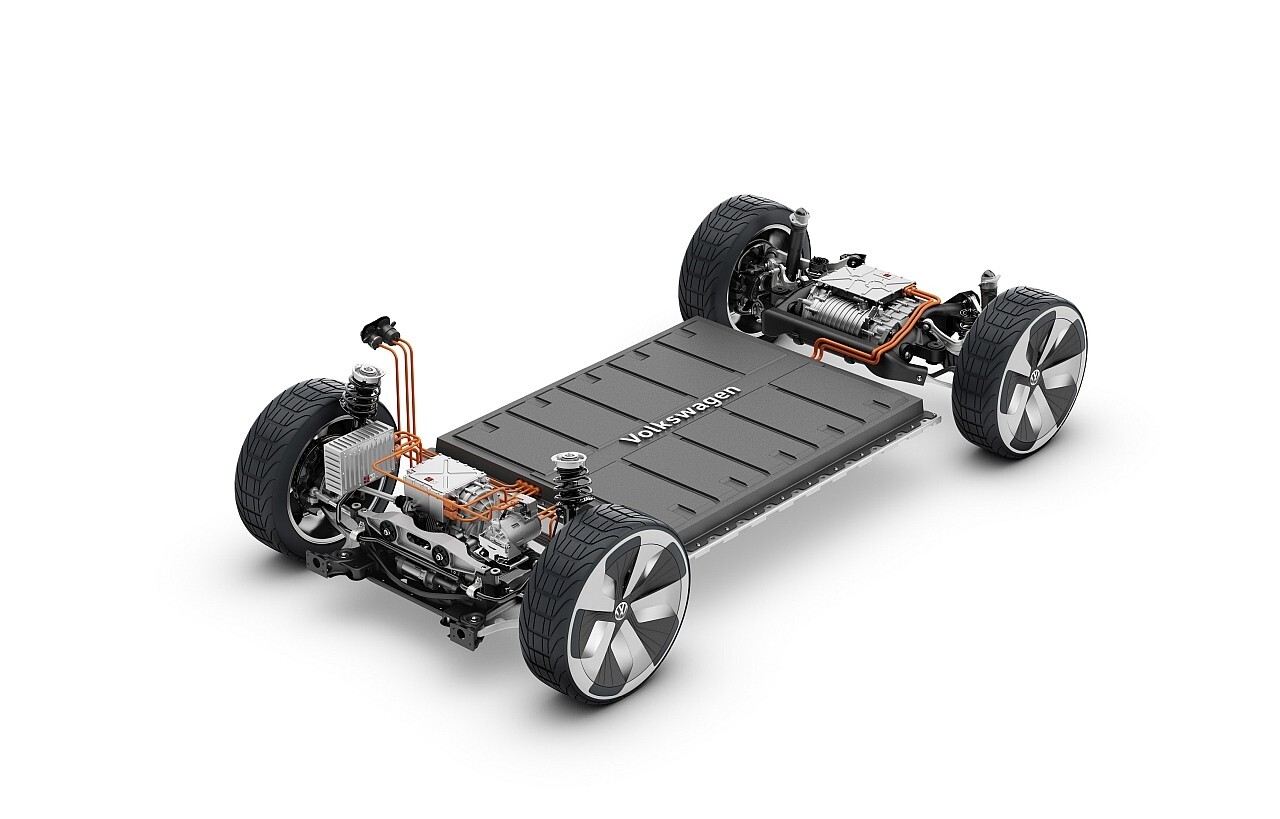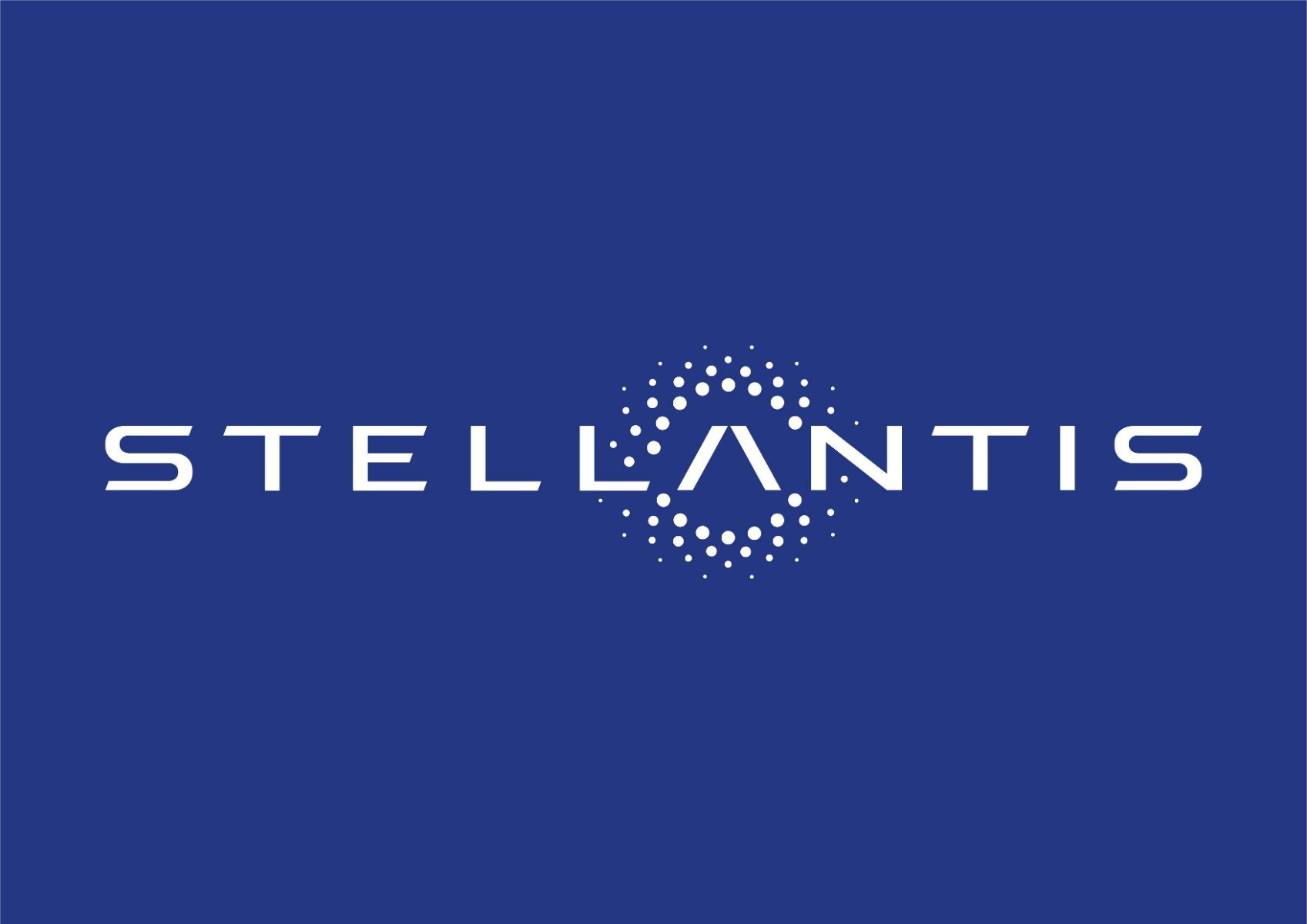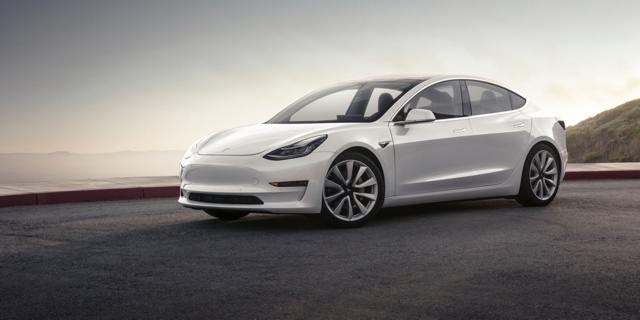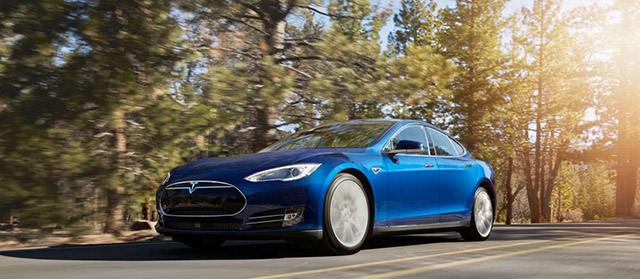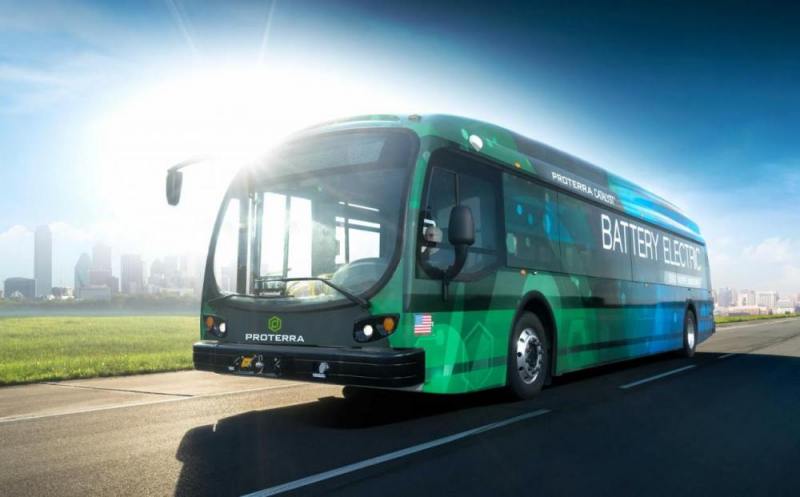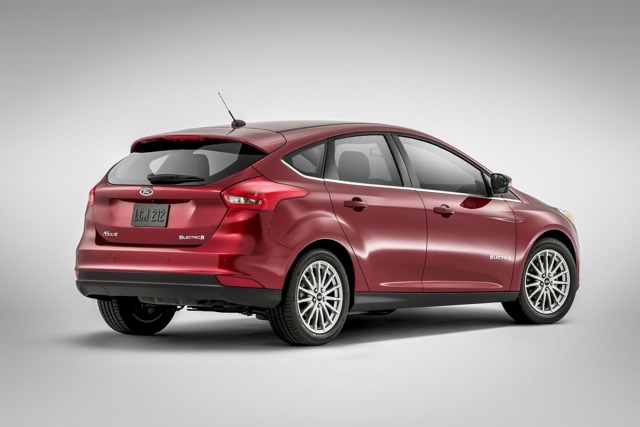Search the Community
Showing results for tags 'battery'.
-
A commonly held perception about lithium-ion batteries used in electric vehicles and hybrids may not be true according to a Stanford University study that shows the batteries lasting longer than earlier lab tests had shown. In a paper published on December 9th, researchers from the SLAC-Stanford Battery Center and the SLAC National Accelerator Laboratory monitored differences in battery health when the batteries were subjected to two types of battery charge and discharge cycled. The most commonly used method of lab testing batteries involves charging and discharging the batteries using a constant current. Another more involved test, called Dynamic Cycling, mimics real-world activity more closely with surges in use followed by rest and regeneration cycles. The researchers found that the batteries subjected to the dynamic cycle test fared better in in health metrics such as the degradation of electrodes and lithium. The team tested four charge-discharge patterns to 92 sample batteries over two years and found that the closer to real world use the pattern was, the better the health results of the battery at the end of the test with up to a 40 percent improvement over the standard test. The results were unexpected because the researchers thought rapid changes in charge-discharge in the dynamic cycling test would cause faster degradation of the battery components. Fear of expensive battery replacement costs had impacted the adoption of electric vehicles despite the likelihood that they will last 12 years or more. View full article
- 10 replies
-
- battery
- electric vehicle
-
(and 1 more)
Tagged with:
-

EV Batteries Lasting Longer Than Expected, Stanford says
Drew Dowdell posted an article in Electric Vehicles
A commonly held perception about lithium-ion batteries used in electric vehicles and hybrids may not be true according to a Stanford University study that shows the batteries lasting longer than earlier lab tests had shown. In a paper published on December 9th, researchers from the SLAC-Stanford Battery Center and the SLAC National Accelerator Laboratory monitored differences in battery health when the batteries were subjected to two types of battery charge and discharge cycled. The most commonly used method of lab testing batteries involves charging and discharging the batteries using a constant current. Another more involved test, called Dynamic Cycling, mimics real-world activity more closely with surges in use followed by rest and regeneration cycles. The researchers found that the batteries subjected to the dynamic cycle test fared better in in health metrics such as the degradation of electrodes and lithium. The team tested four charge-discharge patterns to 92 sample batteries over two years and found that the closer to real world use the pattern was, the better the health results of the battery at the end of the test with up to a 40 percent improvement over the standard test. The results were unexpected because the researchers thought rapid changes in charge-discharge in the dynamic cycling test would cause faster degradation of the battery components. Fear of expensive battery replacement costs had impacted the adoption of electric vehicles despite the likelihood that they will last 12 years or more.- 10 comments
-
- 2
-

-

-
- battery
- electric vehicle
-
(and 1 more)
Tagged with:
-
On Monday, Stellantis and Samsung announced they had signed a memorandum of understanding to build a second battery manufacturing plant in the US via their joint partnership firm, StarPlus Energy. Their first facility is under construction in Kokomo, Indiana. Targeted for production start in the first quarter of 2025, the plant was initially planned to have a production capacity of 23 gigawatt-hours, later to increase to 33 gigawatt-hours as demand rises. However, the partners are bypassing the initial 23 GWh phase and are building out to the full 33 GWh capacity now. The plant is expected to be further expanded in the future to meet demand. The Kokomo plant is expected to create 1,400 new jobs. The latest plant is slated to initially add an additional 34 GWh of capacity, with further future expansion possible. StarPlus Energy is aiming to have battery production started at the new plant in 2027. The location of the newest plant has not yet been announced. Stellantis is aiming to offer at least 25 new battery electric vehicles in North America by 2030 with a roughly 50% BEV sales mix. For Europe, Stellantis plans to be 100% BEV by 2030. To meet those targets, Stellantis is working on global partnerships to secure at least 400 GWh of battery production capacity. View full article
-

Stellantis and Samsung Announce Second Gigafactory for the US
Drew Dowdell posted an article in Stellantis
On Monday, Stellantis and Samsung announced they had signed a memorandum of understanding to build a second battery manufacturing plant in the US via their joint partnership firm, StarPlus Energy. Their first facility is under construction in Kokomo, Indiana. Targeted for production start in the first quarter of 2025, the plant was initially planned to have a production capacity of 23 gigawatt-hours, later to increase to 33 gigawatt-hours as demand rises. However, the partners are bypassing the initial 23 GWh phase and are building out to the full 33 GWh capacity now. The plant is expected to be further expanded in the future to meet demand. The Kokomo plant is expected to create 1,400 new jobs. The latest plant is slated to initially add an additional 34 GWh of capacity, with further future expansion possible. StarPlus Energy is aiming to have battery production started at the new plant in 2027. The location of the newest plant has not yet been announced. Stellantis is aiming to offer at least 25 new battery electric vehicles in North America by 2030 with a roughly 50% BEV sales mix. For Europe, Stellantis plans to be 100% BEV by 2030. To meet those targets, Stellantis is working on global partnerships to secure at least 400 GWh of battery production capacity. -

GM and LG Chem Join Up For Battery Factory In Lordstown
Drew Dowdell posted an article in General Motors
General Motors and LG Chem are joining forces to invest $2.3 billion in a new battery plant near its old Lordstown Assembly complex in Lordstown, Ohio. The deal is a 50/50 partnership between GM and LG Chem and will create 1,100 jobs in the area. Construction of the plant will begin mid-2020 at a greenfield former manufacturing site. The employees will work for the joint-venture and will not be direct GM employees. Initially, the plant will solely supply batteries for GM vehicles, though with a maximum capacity of 30 gigawatt-hours annually, the company could expand to supply other manufacturers as well. GM and LG Chem are forming this joint venture in an attempt to bring down the unit cost of batteries for future vehicles. The plant's capacity, once completed, will be among the largest in the world. General Motors has said it wants to introduce 20 electric vehicles globally by 2023.- 5 comments
-
- 2
-

-
- battery
- electric vehicles
-
(and 4 more)
Tagged with:
-
General Motors and LG Chem are joining forces to invest $2.3 billion in a new battery plant near its old Lordstown Assembly complex in Lordstown, Ohio. The deal is a 50/50 partnership between GM and LG Chem and will create 1,100 jobs in the area. Construction of the plant will begin mid-2020 at a greenfield former manufacturing site. The employees will work for the joint-venture and will not be direct GM employees. Initially, the plant will solely supply batteries for GM vehicles, though with a maximum capacity of 30 gigawatt-hours annually, the company could expand to supply other manufacturers as well. GM and LG Chem are forming this joint venture in an attempt to bring down the unit cost of batteries for future vehicles. The plant's capacity, once completed, will be among the largest in the world. General Motors has said it wants to introduce 20 electric vehicles globally by 2023. View full article
- 5 replies
-
- battery
- electric vehicles
-
(and 4 more)
Tagged with:
-
When Tesla finally revealed the Model 3 a couple weeks, we learned about a number of items such as max range (220 or 310 if you opt for the larger battery), how fast they hit 60 mph, and what will come standard. What wasn't talked about was how big the battery was and power figures. Thanks to some EPA documents, we have some idea on both. InsideEVs found some preliminary documents dealing with the long-range Model 3 and figured out that has an 80.5-kilowatt-hour battery pack - the document says it is a 230 Ah battery pack with 350 V nominal voltage. We should note that CEO Elon Musk has said previously that the Model 3 could not take anything larger than a 75-kWh battery. But, InsideEVs says Musk could have been referring to useable, not the max capacity of the pack. We also have learned that the long-range Model 3 produces 258 horsepower. Sadly, no torque figure was given in the documents. Source: InsideEVs View full article
-

EPA Document Reveals Tesla Model 3 To Produce 258 Horsepower
William Maley posted an article in Tesla
When Tesla finally revealed the Model 3 a couple weeks, we learned about a number of items such as max range (220 or 310 if you opt for the larger battery), how fast they hit 60 mph, and what will come standard. What wasn't talked about was how big the battery was and power figures. Thanks to some EPA documents, we have some idea on both. InsideEVs found some preliminary documents dealing with the long-range Model 3 and figured out that has an 80.5-kilowatt-hour battery pack - the document says it is a 230 Ah battery pack with 350 V nominal voltage. We should note that CEO Elon Musk has said previously that the Model 3 could not take anything larger than a 75-kWh battery. But, InsideEVs says Musk could have been referring to useable, not the max capacity of the pack. We also have learned that the long-range Model 3 produces 258 horsepower. Sadly, no torque figure was given in the documents. Source: InsideEVs- 3 comments
-

Tesla Will Drop the Entry-Level Model S 60 and 60 D Next Month
William Maley posted an article in Tesla
Tesla will be dropping the Model S 60 and 60 D next month. According to Electrek, Tesla sent out emails to potential buyers last week letting them know that they have until April 16th to place an order for the 60. The 60-kWh version of the Model S was an odd model since it was equipped with a 75kWh battery pack that was limited via software to act like a smaller battery. Tesla offered the ability to unlock the full capacity of the battery for only $9.500. Tesla confirmed this and explained the reason they are dropping the 60 is most buyers tend to go for the battery upgrade and they want to streamline the ordering process. Source: Electrek -

Tesla Will Drop the Entry-Level Model S 60 and 60 D Next Month
William Maley posted a topic in Tesla
Tesla will be dropping the Model S 60 and 60 D next month. According to Electrek, Tesla sent out emails to potential buyers last week letting them know that they have until April 16th to place an order for the 60. The 60-kWh version of the Model S was an odd model since it was equipped with a 75kWh battery pack that was limited via software to act like a smaller battery. Tesla offered the ability to unlock the full capacity of the battery for only $9.500. Tesla confirmed this and explained the reason they are dropping the 60 is most buyers tend to go for the battery upgrade and they want to streamline the ordering process. Source: Electrek View full article -
Previous Page Next Page All-electric zero-emission that can finally replace all petro powered buses in North America was unveiled at the Annual APTA (American Public Transit Association) meeting in Los Angeles. Proterra which is known to have launched the first fleet of alternative fuel buses has pushed American engineering with over $130 million in private equity funding to produce a true replacement for all diesel / alternative fuel buses. The Catalyst E2 bus series hit the new milestone at the Michelin's Laurens proving grounds. A 600+ mile passenger free track run translates into 350 miles of continuous real world driving according to Proterra's CEO Ryan Popple. Proterra states that bus fleets said they could fully replace fossil fuel buses if they had buses that could cover routes for a single day up to 350 miles fully loaded with people. Proterra achieved this challenge by using carbon fiber and increasing energy density in the buses battery pack. Proterra battery packs come in choices of 440 KWh to 660 KWh size. The base model bus with a 440 KWh battery pack is what was used to set their new world record for electric distance in a bus. These battery packs are 6x more than the recently announced Tesla S/X P100D. These batteries can handle sustained quick charging plus they can also use the industry standard J1772 CCS plug-in chargers. The first 34 buses are scheduled to be delivered to Foothill Transit Authority in Los Angeles County this fall. Reno, Nevada and 11 other cities including Seattle, Washington will follow in 2017 with taking delivery of these pure long distance electric buses. Proterra expects to deliver over 300 buses in 2017. Safety first was more than just a slogan at Proterra, with this guiding principle, the Catalyst bus was engineered from the beginning as the battery packs are located outside the passenger compartment. The are liquid temperature controlled and incorporated with both active and passive safety features. They are also ruggedized with reinforced enclosures and a safety barrier between the batteries and the passenger compartment. The buses are also build with Mobileye crash avoidance technology and using plenty of impact absorbing carbon fiber materials. Proterra's main competitor is Chinese based BYD with production facilities in California who also aims to deliver EV buses. However, BYD buses will only have a range of 160 to 200 miles compared to Proterra's. California has help fund both Proterra and BYD development, with the requirement that the engineering and production of the buses be done in California. The recent Volkswagen emissions scandal is cited as a reason cities are no longer wanting diesel buses. They also point out that the public is asking for much cleaner transit solutions. Proterra states that customers want a environmentally friendly bus, that does not smell, has much reduced noise pollution, and makes for a more comfortable trip. Their $740,000 buses depending on configuration was a hit at APTA with many transit authorities asking for more information especially on the east coast which has lagged behind moving to cleaner alternative energy buses and runs some of the oldest bus fleets in the country. An example of how quiet these buses are, the Proterra Catalyst is only 57 dB lower than normal conversation at 60 dB much less a diesel bus 72 dB, Formula 1 Racecar 115 dB, and a Jet plane taking off at 140 dB. Per Proterra own web site, efficiency is the goal and with that you have proof in the cost to run an EV bus as follows: Proterra Catalyst - 21.4 MPGe @ average of 19 cents per mile CNG - 3.27 MPG at 74 cents per mile Diesel - 3.86 MPG at 84 cents per mile Hybrid - 4.58 MPG at 63 cents per mile. Quoting Mass Transit Mag who was at the APTA meeting: Compelled by a total cost of ownership significantly lower than fossil fuel-based alternatives, transit agencies across the U.S. agree that diesel’s dominance is waning, giving way to the economic and environmental benefits of battery-electric mass transportation: J. Barry Barker, executive director, Transit Authority of River City: “TARC now has largest deployment of Proterra battery-electric buses east of the Mississippi. Providing both environmental benefits and cost savings, these buses are a symbol of Louisville’s sustainability efforts. We are proud of these positive impacts and to call Proterra a partner, as they pass this key milestone in their journey as the foremost transport innovator in the world.” Doran Barnes, executive director at Foothill Transit: “We just surpassed one million miles of revenue service with our battery-electric Proterra fleet, and we’re looking forward to many more miles to come. Since our first EV bus procurement with Proterra in 2010, we knew that zero-emission buses were the future of mass transit. Now, with the new Catalyst E2, this vision is a reality. We’re excited by the possibilities of an all-electric future.” Jonathan Church, administrator at Worcester Regional Transit Authority (WRTA): “More and more, we’re witnessing our neighbor agencies consider all-electric buses, as they see how well our Proterra buses have weathered some of the ugliest Northeast snow storms. We look forward to continuing our partnership with Proterra as their technology continues to expand within North America.” We have previously covered early versions of Proterra EV buses. These early buses achieved 23 miles per charge and have become popular with inner city routes are being outclassed by this new generation of EV Bus. Proterra states their EV buses to date have logged over 2.5 million miles of trouble free use on city streets, reducing fuel use by 540,000 gallons of diesel and reducing emissions by 10 million pounds of carbon not released into the planet atmosphere. Ryan Popple, CEO of Proterra says, "The question is no longer who will be an early adopter of this technology, but rather who will be the last to commit to a future of clean efficient and sustainable mobility." Proterra believes they have broken down the final barrier to widespread market adoption of EV buses. Proterra, leaving Diesel in the past! Source: Proterra Press Release Press Release on Page 2 PROTERRA CATALYST® E2 SERIES SETS NEW INDUSTRY PRECEDENT WITH A NOMINAL RANGE OF UP TO 350 MILES September 12th, 2016 Highest-performing bus on the road can serve toughest bus routes on a single charge Los Angeles, Calif. – APTA 2016 – September 12, 2016 – Today at the American Public Transit Association (APTA) Annual Meeting, Proterra, the leading innovator in heavy-duty electric transportation, unveiled the newest addition to its fleet of zero-emission vehicles: the Catalyst E2 series, named for its unprecedented Efficient Energy (E2) storage capacity of 440 – 660 kWh. Last month, an E2 series vehicle achieved a new milestone at Michelin’s Laurens Proving Grounds where it logged more than 600 miles on a single charge under test conditions. Its nominal range of 194 – 350 miles means the Catalyst E2 series is capable of serving the full daily mileage needs of nearly every U.S. mass transit route on a single charge and offers the transit industry the first direct replacement for fossil-fueled transit vehicles. The high-mileage Catalyst E2 series joins the existing Catalyst FC and XR series vehicles, designed for circulator and intermediate-mileage routes, respectively. The Future of Transit Arrives: Proterra Customers Across the U.S. Praise Electrified Transport Compelled by a total cost of ownership significantly lower than fossil fuel-based alternatives, transit agencies across the U.S. agree that diesel’s dominance is waning, giving way to the economic and environmental benefits of battery-electric mass transportation: Barry Barker, Executive Director, Transit Authority of River City: “TARC now has largest deployment of Proterra battery-electric buses east of the Mississippi. Providing both environmental benefits and cost savings, these buses are a symbol of Louisville’s sustainability efforts. We are proud of these positive impacts and to call Proterra a partner, as they pass this key milestone in their journey as the foremost transport innovator in the world.” Doran Barnes, Executive Director at Foothill Transit: “We just surpassed one million miles of revenue service with our battery-electric Proterra fleet, and we’re looking forward to many more miles to come. Since our first EV bus procurement with Proterra in 2010, we knew that zero-emission buses were the future of mass transit. Now, with the new Catalyst E2, this vision is a reality. We’re excited by the possibilities of an all-electric future.” Jonathan Church, Administrator at Worcester Regional Transit Authority (WRTA): “More and more, we’re witnessing our neighbor agencies consider all-electric buses, as they see how well our Proterra buses have weathered some of the ugliest Northeast snow storms. We look forward to continuing our partnership with Proterra as their technology continues to expand within North America.” 2.6 Million Miles and Counting With annual sales already 220% higher than 2015, Proterra is experiencing a breakthrough year in the mass transit sector and expects the debut of the Catalyst E2 series to only further magnify this success. Doubling production in 2017 to serve unprecedented customer demand, Proterra will have both of its manufacturing lines in full operation in Greenville, S.C. and the City of Industry, Calif. To date, Proterra buses across the United States have completed over 2.5 million miles of revenue service, displacing 540,000 gallons of diesel, and eliminating over 10 million pounds of carbon emissions. “Proterra’s primary goal has always been to create a purpose-built, high-performance electric vehicle that can serve every single transit route in the United States. Today, with the unveiling of the Catalyst E2 Series, that goal has been achieved,” said Ryan Popple, CEO of Proterra. “The question is no longer who will be an early adopter of this technology, but rather who will be the last to commit to a future of clean, efficient, and sustainable mobility. With the Catalyst E2 offering a no-compromise replacement for all fossil fuel buses, battery-electric vehicles have now broken down the final barrier to widespread market adoption.” About Proterra: Proterra is a leader in the design and manufacture of zero-emission vehicles that enable bus fleet operators to eliminate the dependency on fossil fuels and to significantly reduce operating costs while delivering clean, quiet transportation to the community. Proterra has sold more than 312 vehicles to 35 different municipal, university, and commercial transit agencies throughout North America. Proterra’s configurable EV platform, battery and charging options make its buses well suited for a wide range of transit and campus routes. With unmatched durability and energy efficiency based on rigorous U.S. certification testing, Proterra products are proudly designed, engineered and manufactured in America, with offices in Silicon Valley, South Carolina, and Los Angeles. For more information, visit: http://www.proterra.com and follow us on Twitter @Proterra_Inc. Proterra Media Contact: [email protected] Previous Page Next Page
-
G. David Felt Staff Writer Alternative Energy - www.CheersandGears.com Tesla first to 100kWh Battery According Tesla today, they are now building the fastest 0-60 sedan in the world, beating out Porsche and Ferrari. Today people can now order the P100D with Ludicrous mode! This allows this 7 passenger sedan 5 adults / 2 kids to hit 60 in 2.5 seconds according to Tesla's own Blog. The Tesla X P100D can hit 60 in 2.9 seconds. The battery is 300 miles in Ludicrous mode and 315 miles in normal mode. Click Here Tesla says all S and X orders not delivered can upgrade to the 100 battery pack for $10,000 and existing S and X can upgrade for $20,000 to the 100 battery pack. The higher upgrade fee on existing owners is due to disposal of the 90 battery pack. Tesla goes on to also say that this helps fund development of the Tesla 3.
-
One of the key problems with most electric vehicles is the limited range on offer with many offering a max range of around 100 to 120 miles. Many believe that for electric vehicles to be in the mainstream, they need to offer a minimum of 200 Miles. But not Ford. Speaking with Automotive News, Ford's director of electrification programs and engineering Kevin Layden says the updated 2017 Focus EV with a range of 100 miles will cover the average commute for a driver. "I think right now with the launch of the Focus Electric at 100 miles, it is going to satisfy a big chunk of the population. It's going to be really affordable and a step up from where we are now," said Layden. The primary issue is the cost and weight of the batteries to achieve a 200 mile range. Ford doesn't see how an increase of possibly $6,000 and added weight would help. Layden says the lower range allows the blue oval to use a lighter and less expensive battery pack. But there is another factor possibly in play as to why Ford isn't going with a 200 mile range with the Focus EV, sales. The Focus EV is very slow seller for the brand, with only 1,717 models sold in 2015. Through March, Ford only has moved 257 Focus EVs (average of about 86 vehicles per month). Source: Automotive News (Subscription Required)
-
- Battery
- Electric Vehicles
-
(and 3 more)
Tagged with:
-
One of the key problems with most electric vehicles is the limited range on offer with many offering a max range of around 100 to 120 miles. Many believe that for electric vehicles to be in the mainstream, they need to offer a minimum of 200 Miles. But not Ford. Speaking with Automotive News, Ford's director of electrification programs and engineering Kevin Layden says the updated 2017 Focus EV with a range of 100 miles will cover the average commute for a driver. "I think right now with the launch of the Focus Electric at 100 miles, it is going to satisfy a big chunk of the population. It's going to be really affordable and a step up from where we are now," said Layden. The primary issue is the cost and weight of the batteries to achieve a 200 mile range. Ford doesn't see how an increase of possibly $6,000 and added weight would help. Layden says the lower range allows the blue oval to use a lighter and less expensive battery pack. But there is another factor possibly in play as to why Ford isn't going with a 200 mile range with the Focus EV, sales. The Focus EV is very slow seller for the brand, with only 1,717 models sold in 2015. Through March, Ford only has moved 257 Focus EVs (average of about 86 vehicles per month). Source: Automotive News (Subscription Required) View full article
-
- Battery
- Electric Vehicles
-
(and 3 more)
Tagged with:
-
G. David Felt Alternative Fuels & Propulsion writer www.CheersandGears.com Tesla Roadster 3.0 and 400 mile range reality? Tesla gave a late Xmas present to electric advocates on December 26th 2014. Roadster 3.0 was posted covering the following top 3 topics: 1. Batteries, 2. Aerodynamics and 3. Rolling Resistance. Tesla talks about the how their battery from 2008 was revolutionary in the auto industry and while it was good then and up till now for their current S sedan, lithium ion battery advances have pushed them to get 31% more energy from the same size battery pack. This new cell now gives approximately 70k Wh in the original battery package. Tesla then moves on to talk about their drag coefficient of .36 on current Roadster and how with a new Retrofit aero kit they can drop it to .31 a 15% improvement. The final bit of technology info is how Tesla talks about rolling resistance on the current Roadster which has a 11.0 kg/ton. An upgrade will give a 20% improvement by allowing the Roadster 3.0 to have a Crr of approximately 8.9 kg/ton. With this improvement come additional improvements for residual brake drag and wheel bearing to reduce drag. This last part is particularly noticeable as anyone who has driven a Chevy Suburban and then gotten into a Cadillac Escalade ESV will notice how much better the Cadillac glides showing that the quality of Bearings, brakes, seals, etc. all can help to reduce drag. Tesla's summary of these improvements is that Roadster 3.0 can achieve an estimates 40-50% improvement on Range over the original Roadster. Tesla goes on to say that they expect to prove this in the early weeks of 2015 with a drive from San Francisco to Los Angeles that is to be non-stop. Tesla finishes up by stating that they will open up for appointments to be made starting Spring of 2015 for existing Roadsters to be upgraded with these 3 major focus points once the battery pack finishes safety validation. They go on to say this will not be the last of the upgrades for existing and new Roadster owners. As of this writing there were 45 comments posted. As expected they are all positive, and yet many also are giving suggestions for powertrain upgrades for performance rather than battery life, reduced weight for better handling or a combination of them. Seems many want their cake and eat it too. This brings up an interesting question, if Tesla is getting ready to release a battery pack that can go 400 miles on a charge, what will Volt 2.0 be for GM or Toyota have for the Prius family of autos? Could we see a change over from gas to electric faster than people have expected?
- 10 replies
-
- 400 miles
- areodynamics
- (and 6 more)


